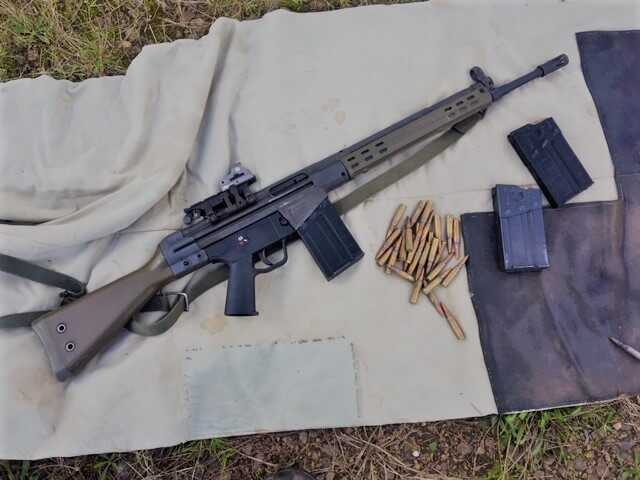
PTR Industries’ GI PTR 100 is a select fire roller-delayed blowback-operated rifle based on Heckler & Koch’s famous G3 battle rifle. Many people refer to PTR guns as clones, but this isn’t correct. Back in 2002, the predecessor of PTR, (JLD Enterprises) purchased H&K-licensed prints and tooling from Fábrica de Braço de Prata, in Portugal. The guns PTR makes are not copies, they are made on original designs and tooling updated for 21st-century manufacturing.
PTR Industries is an American company that specializes in making modern roller-delayed firearms in Aynor South Carolina. PTR stands for “Precision Target Rifle” and PTR is all about classic design and modern production techniques.
What is the big deal about roller-delayed blowback operation? Most familiar repeating rifles (looking at you AR-15) send gas from a hole in the barrel to cycle the action. The regulation of this gas is the source of problems well documented in thousands of internet posts.
The PTR/G3 rifles use recoil produced by firing the cartridge. The challenge of recoil operation is the tremendous amount of force applied instantly. The genius of the design is a delayed blowback that spreads the force out for smooth operation. The PTR/G3 system uses a non-rotating bolt head that locks into a trunnion with two rollers.
A wedge-shaped locking pin holds the rollers in place for enough time for the case to contract (assisted by a grooved chamber) and allows chamber pressures to drop so the bolt can open safely. The bolt carrier travels backward four times faster than the bolt head, ensuring a safe drop of pressure within the barrel prior to extraction.
Another way to look at this action is as a direct impingement gas system that uses the spent casing to unlock the bolt. After unlocking, the recoil finishes the process. If you are a reloader this isn’t the rifle for you as the fluted chamber and the force of the extraction literally destroys the spent casing.
While PTR makes guns in 9mm, 7.62×51, and 7.62×39 the GI PTR 100 is my favorite. Like its cousin the StG44, the G3 is built for crude war-time production using as many stamped parts as possible. This is a feature, not a flaw. The finish matches the G3 rifles I have seen all around the world.
If you compare the PTR to an M-14, an M-16, or an FN FAL you will see the difference between war-time production and precision manufacture. The receiver is stamped from sheet steel.
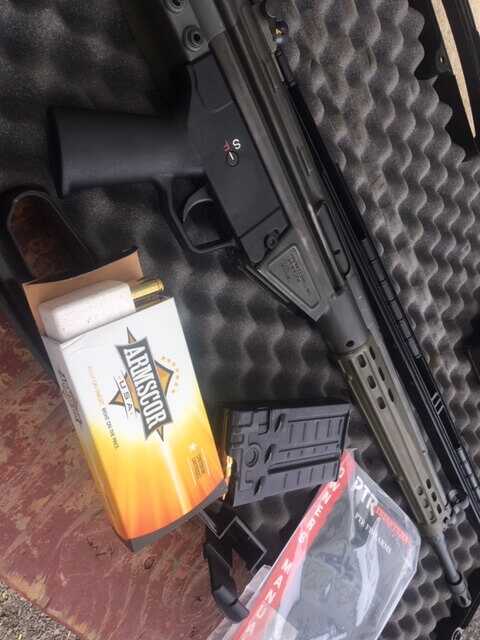
Original PTR-91 models used some military surplus components, and many parts between G3 and PTR-91 guns are interchangeable. These days, PTR produces every machined part on its rifles in its Aynor, South Carolina plant. Plastic accessories and furniture are made locally in the United States on PTR-owned tooling.
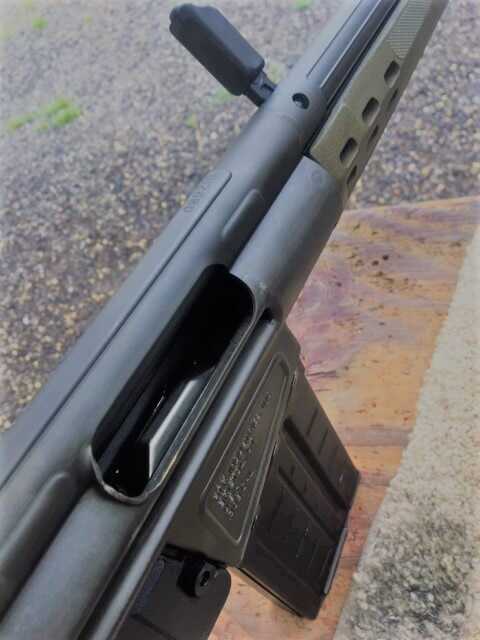
GI PTR 100 Specifications
OAL:40.5″
Barrel:18″
Weight:9.5 lbs
Operating Systems: Roller-delayed blowback
Caliber:.308 (also accepts 7.62 x 51)
Twist:1/10
Trigger Pull:9-10 lbs
Magazine:10 or 20 round
MSRP $1,408.00
How is the PTR different?
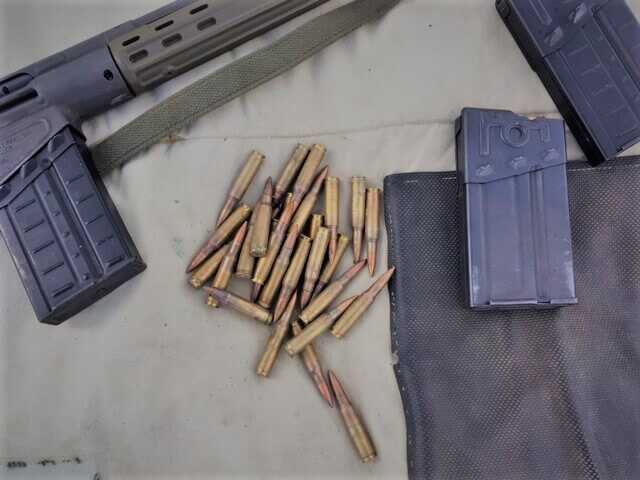
One of the things I love about the PTR is that it looks so much like the G3 and shares furniture. The G3 wasn’t famous for accuracy, so PTR made some 21st-century changes to make it even better.
PTR barrels are made in-house using 41v50 Chromoly steel. PTR 91 rifles replaced the G3 rifle’s tapered barrel contour with a bull barrel with a 0.75-inch diameter for stiffness and rigidity. It features five-groove rifling and a 1:10 right-hand twist.
The fluted chamber was an innovation driven by the operating system. PTR determined that a change to the chamber with fewer flutes reduced felt recoil with no impact on reliability. If you are a reloader this isn’t the rifle for you.
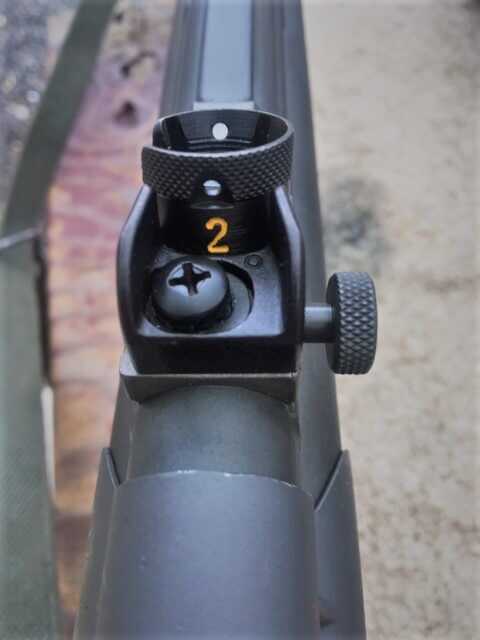
The G3 had a well-designed but complicated rear sight which used a sight adjustment tool to prevent shooters from adjusting the sights. The PTR keeps the diopter rotating drum with 100-, 200-, 300- and 400-meter settings. The 100-meter setting is a quick-acquisition V-notch. The difference? No sight tool is needed! The PTR 91 has a knurled knob for quick windage adjustments.
PTR also upgraded the optics mount. The GI model still keeps the claw mount that attached around the top of the receiver, but PTR uses a CNC machine on the mount for precise interface with the claw portion of the mount. Newer versions have a modern Picatinny rail.
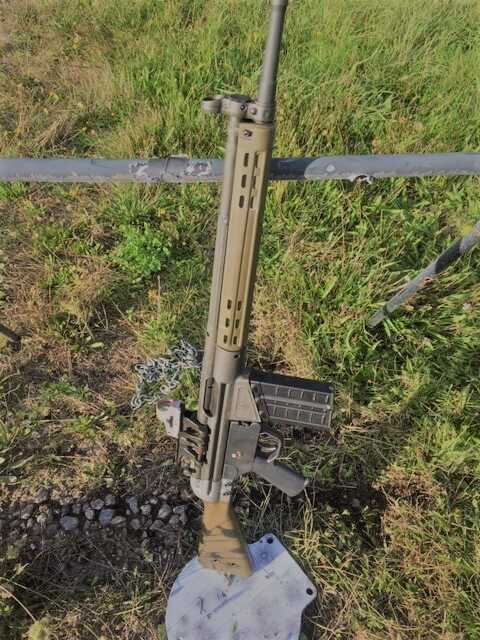
A folding cocking handle is located on a tube above the barrel, at the left side, and does not reciprocate when the gun is fired. The NATO standard 22mm flash hider mounts a bayonet and serves as an adapter for launching rifle grenades.
The PTR uses G3 pattern magazines. I like the KCI USA magazines, gunmagwarehouse.com has them in stock for $10 new. Surplus magazines are available in either steel (260 grams) or aluminum (140 grams). I have a couple of gun show 30-round magazines that work, but they are long and heavy. H&K also made a 50-round drum. In El Salvador, I saw some Franken mags made by welding two 20s together. Probably not recommended by H&K.
Let’s talk about ergonomics. Why is the original G3 impossible to use left-handed? In the German Army, it was forbidden to shoot left-handed.
Why is the selector/safety impossible to manipulate with the right hand? The “master grip” of the right hand should never shift. You put it on auto when you cross the border and put it on safe after the enemy’s capital is captured.
How do you change magazines? There is no last-round bolt hold open on the G3 or MP5. The first step in the reload; guess your gun is empty. You never know for sure until the hammer drops on an empty chamber. Now we have to reach forward and pull the cocking handle back and lock it to the rear. On the typical reload, this launches a live round onto the ground. Then you grab the magazine and hit the magazine release with your thumb. This design forces you to grab the magazine.
At this point, you may as well retain the magazine because this is not a quick process and hey, those are some pricey mags. If you attempt to cheat the design features and tactical reload on a closed bolt, you are flirting with disaster. You may have an empty chamber. Once you get a new mag in position, you lock it in, slap the cocking handle, allowing the bolt to go forward, chambering a round. You may not want to try this under pressure without extensive practice.
Disassembly is not too difficult. It is harder than an AK and easier than an M-4. It takes a bit of head-scratching to figure out the delayed roller blowback. If you take the bolt and bolt carrier out, don’t push the bolt in to see how it locks. The spring that holds the bolt is VERY strong. It takes two men and a boy to get it unlocked again. One of the things I found endearing about the fixed stock was the two holes in it. The take-down pins are stored in these holes when the gun is disassembled. How orderly!
Accuracy
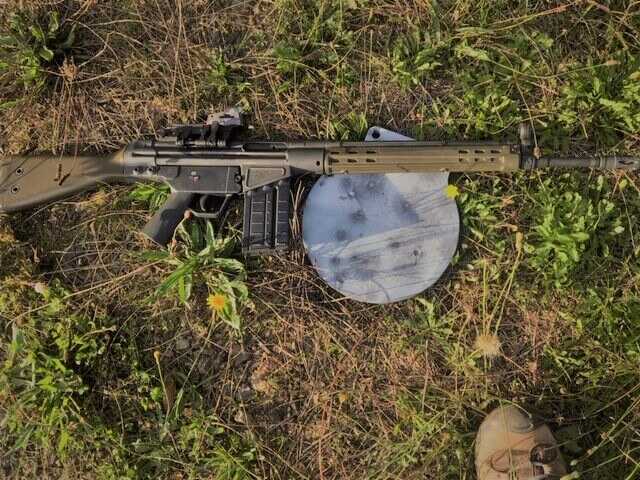

I’ve found the Romeo3 reflex sight is the ideal sighting solution for the GI. The red-notch coating ensures a brilliant red-dot perfect snap shooting. The 3 MOA Red Dot sight has elevation/windage adjustments of 100 MOA. To extend battery life, Romeo3 is activated through motion-sensing technology, to immediately power up when it senses movement and to power down when it does not.
The trigger is OK. The stamped sheet metal trigger is a little mushy and the reset is long. Out to 200 yards, this gun will hit a standard target all day long. Past 200 you have to adjust the sights and pay particular attention to the trigger.
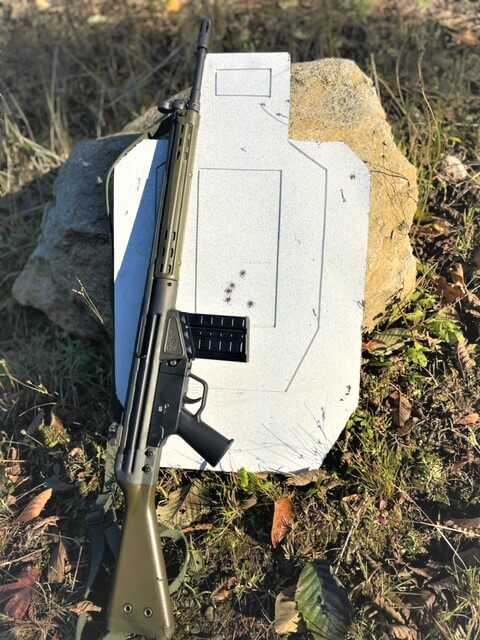
As a free American, you can still own a quality semi-auto version of this great gun in most states. Let’s hope that is not a limited-time offer. PTR Industries in South Carolina makes the GI PTR 100 which is every bit as good its German cousins. GI PTR 100 w/ 20 round magazine MSRP $1,408.00
***Buy and Sell on GunsAmerica! All Local Sales are FREE!***


Back in the 80s you could buy a new H&K for $399. I really wanted one, but even that was a bit much for me then. This is a great heavy self-defense weapon, supposed to be super reliable. Stay safe.
I have an original HK 93, and though one doesn’t get as many reloads out of the casings, they can be reloaded several times, just like from any other rifle.
However, there will be markings from the fluted chamber, but mostly it’s just carbon scorching from the firing, and diminishes with case cleaning. I don’t bother with cleaning too much, it isn’t worth it as the HK tends to fling the brass up 15 feet away and forward, so brass loss is high in areas of brush and grass.
No arguing with the AR guys over whether or not it’s your brass though. 🙂
Once had a HK-91, of which this gun has many features. Bought it mainly for the roller-locked action, which functioned great! Can’t say that for the rest of the gun. The trigger was ABOMINABLE! HK said there was no way to remedy that. The factory later came out with a supposedly improved trigger group(expensive!), which by all accounts was not much of an improvement. The length of pull was way too short, even for a guy my size. The peep sight sucked; could only hit at all with the V-notch. Speaking of hitting — the gun was quite accurate. It was also heavy. The bolt handle & throw must have been designed by a flunky engineer, because it was very difficult to operate due to the ridiculously small, slippery handle and long, stiff pull(with gloves on, forget it). The gun was muzzle-light, which caused excessive muzzle jump on recoil, delaying reacquiring the target. The plastic butt pad was super slippery, which would cause the stock to slip out of position upon firing, especially if wearing winter clothing; particularly bad with wool. The design caused the extracted cases to be flung against the rear of the ejection port, severly denting them and rendering them unsuitable for reloading. I always felt that sooner or later cracks would appear at the point of impact as a result of that. Fit & finish was very good.
Balancing the good points against the bad, I sold it.
Thanks for this..
The PTR-100 has the metal trigger pack, not the polymer one pictured.
The barrel is original contour, not a “bull barrel” with a 0.75″ diameter.
While it does beat up brass, folks reload the spent casings all the time; add a port buffer and the task is made easier.
The rear sight elevation is not adjusted with a Phillips head screwdriver. The screw is used to loosen the rear sight so the windage knob can adjust the elevation. You have to retighten the screw to have the adjustment hold. Still need a tool to rezero the elevation.
Then there are subjects of disagreements…
Why would you consider a reflex sight for a full power battle rifle? Makes no sense.
Your explanation on recharging the weapon is baffling to say the least.
I live in SC and was able to get my hands on the Limited Edition Commemorative PTR91 when the company opened in Aynor. I have #109, the Governor of SC received #1. It is a We the People version in nickel coating. These rifles are heavy but accurate.